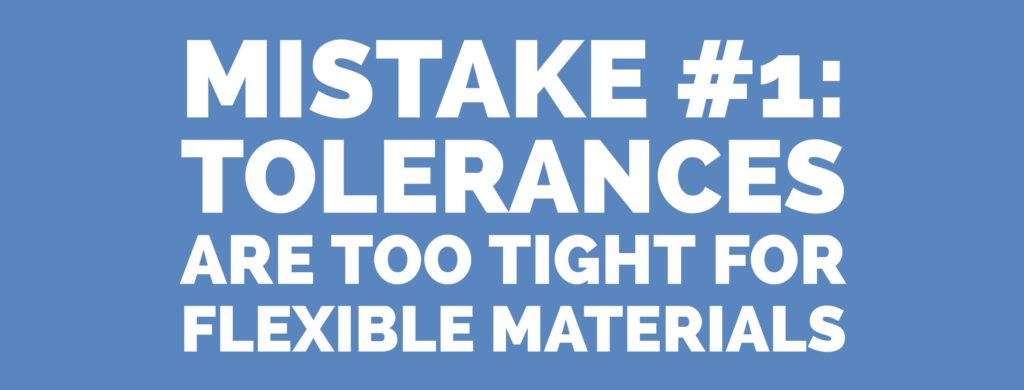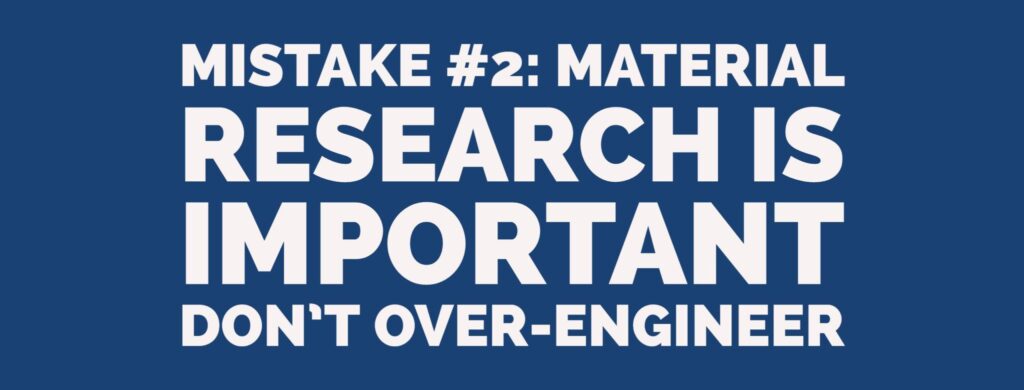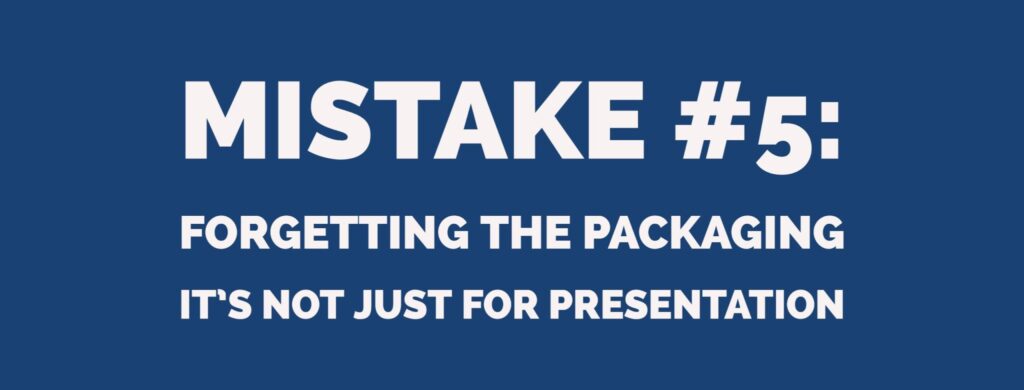CGR Products was born in Greensboro, North Carolina, in 1963. We started out cutting precision gaskets for the textile industry, but we’ve come a long way — and seen a lot of mistakes — since then. Every day, our team cuts, slits, laminates, skives, and molds materials into precision components to serve clients in numerous facets of the industrial OEM market.
We work with designers to bring their projects and tools to life, and do everything we can to make that process efficient, affordable and successful. Our operators use over 100 pieces of quality equipment to handle daily work, and they dedicate their energy to executing designs with precision and efficiency.
Over time, our team has encountered many common, simple design mistakes that are easily avoided. That means savings — in both time and money — for everyone, especially engineers.
Mistake #1: Tolerances are too tight for flexible materials
Custom fabricated parts can come from dozens upon dozens of materials — PVC, graphite, fiberglass, Mylar, Plexiglass, polycarbonate, urethane, PTFE, rubber, PEEK and neoprene are just a few examples. Even soft, flexible non-metallic materials such as adhesives can be cut to precise shapes and dimensions with state of the art methods from the CGR team.
Custom Cutting Processes
- Die Cutting: Rotary die cutting and flatbed die cutting are easy, cost-effective and ideal for high volume orders. They provide for easy hole and web removal and are very precise, optimal for producing parts with the tightest tolerances.
- Kiss Cutting: This process cuts material without penetrating its backing liner. This is excellent for producing parts in sheets, like a roll of stamps. The parts can be removed one at a time, with absolute precision.
- Knife Cutting: Fast and accurate, knife cutting produces a smooth, clean edge on manufactured parts with a serrated blade. Best for paper, fiber, rubber and foam gaskets, and ideal for running prototype parts due to optimal material yield (and thus a lower cost).
- Slitting/Splitting: An excellent method for converting adhesive tape into precision roles of all sizes. The industry-standard method will produce a roll cut to exact engineered dimensions.
- Waterjet Cutting: Using a high-pressure water stream, this method is best for soft materials. It can accommodate extremely tight tolerances and produces clean, smooth edges in materials up to 9” thick without a cupping effect. Another recommended method for prototype parts with good material yield.
Despite the high quality and precision of these methods, all materials have certain limitations. Most design engineers work regularly with rigid materials, and request accordingly tight tolerances. However, flexible materials don’t need such tight tolerances — especially when undergoing precision cutting processes.
We recommend that any design attempt to remain as pure and straightforward as possible, while minimizing hazardous elements and potential error. Designs that offer more forgiveness and flexibility — especially in materials that are inherently flexible — have greater chances for success.
The engineers at CGR work intimately with this range of materials, and can offer insight from the very beginning of a project’s design. Tighter tolerances raise both costs and risk for mistakes; CGR engineers can help answer questions as you consider the softness of material resources in the flexibility of your design.
Mistake #2: Material research is important — don’t over-engineer
It’s easy to be overwhelmed at the wide variety of available materials for your project. Everyone wants a top-of-the-line result, but that doesn’t always mean spending the most money. Our clients often ask for an expensive brand that really isn’t necessary — there are plenty of cheaper, highly capable materials that will often serve the same purpose just as well.
For example, three of the polymers from the low-cost range at CGR Products display impressive capabilities.
Neoprene: This general purpose industrial gasket material is resistant to non-aromatic petroleum oils and greases with a standard smooth finish, 500 psi tensile strength, and temperature range of -20 to +170 F.
Nitrile Rubber: Oil, grease and solvent resistant, this is an ideal material for industrial service. 640 – 700 psi tensile strength, 300% elongation, and temperature range of 0 F to +170 F (exception 566 Nitrile, White, FDA, temperature range -25 F to +180 F).
Butyl Sheet: A quality rubber sheet that’s ideal for airtight rubber applications, Butyl has excellent resistance to ketones, paint or ink dryers, and ozones. Also performs well in saturated or inorganic salt solutions; 1200-1300 psi tensile strength and temperature range of -40 F to +180 F.
The full inventory of materials at CGR Products is nothing short of vast, and our team works with every one of them. An early consultation with a materials professional can save engineers time and money in final designs.
Mistake #3: Discounting the properties — final performance is fundamentally based on material choice
Manufacturers don’t simply supply a range of materials in order to offer flexible rates. Regardless of cost, every material has a unique set of properties and performs differently according to temperature, chemical exposure and so on. When an engineer doesn’t carefully consider a material’s specific performance ranges, the final product often doesn’t live up to expectations in appearance, function and overall results.
In temperature range alone, the CGR portfolio offers materials performing from -150 F to 500 F, and for every range in-between.
Sample Temperature Ranges
- SBR: -65 F to +180 F
- Hypalon: -65 F to +250 F
- Polyacrylate: -20 F to +350 F
- Flourocarbon: -40 F to +500 F
- Silicone: -150 F to +500 F
These are just a few of the materials from the CGR inventory — find the rest in our Resource Library or contact a specialist with your desired performance requests. They’ll be sure to have recommendations for your design needs.
Mistake #4: Neglected edge clearances result in ripping
Our engineers at CGR Products frequently experience errors in flange width, specifically in hole placement. While cutting processes are precise enough to create these holes, all materials have limitations.
Holes that have been designed too close together, regardless of the precision of manufacturing, will still rip in the final product. This is a disappointment for everyone, and can be easily avoided with early consideration and collaboration between designers and our engineering team.
The position of bolt holes in a flange are of particular importance, both for the finished piece and the CGR components.
The Centerline Rule for Flanges
- All bolt holes should straddle the centerlines of the overall piece.
- A vertical flange face should be designed with bolt holes on the vertical and horizontal centerlines. The centerline should cut through the diameter of the holes.
- A horizontal flange face needs holes oriented on the Plant North centerlines. This horizontal reference point can be derived from the geographical references in a given plant situation.
Remember to take extra consideration for the material in your design! Depending upon the liquids to be handled in the final flange project, your gasket may demand different chemical or physical traits. Our team of specialists (not to mention our deep selection of in-stock choices) can help you select a material that strikes the balance between physical fit for your design’s bolt holes and chemical performance for the final project.
Mistake #5: Forgetting the packaging — it’s not just for presentation
CGR Engineers work with complex orders every day, and their insight can inform every step of the process, all the way to delivery. We want you to receive your parts in the easiest, most efficient way. Considering packaging choices from the start of a project is a great way to preempt potential confusion or worse, a mess, at delivery.
As mentioned previously in this guide, kiss cutting is one of our specialties at CGR. This very particular type of cut produces a sheet of matching parts with a backing sheet, much like stickers or stamps. The parts are crafted on a roll, ready to be removed one by one for application.
If an engineer has chosen the kiss cut method for production but requests for the finished materials to be removed from the roll before they’re in hand, the resulting package will be very difficult to handle. Think about how you’ll need to use your parts, or how you plan to receive or store them. The CGR team offers samples, recommendations and packaging insight for jobs of all sizes.
What Can CGR Do For You?
Readying a new design for production requires much more than five easy tips. The full CGR Resource Library and team of experts are available to clients with specifications, cost charts, comparative material information on temperature and chemical resistance and more. Our design team works with automotive, marine, appliance, plastic molding, power tool, electrical, small engine and countless other clients. We provide solutions to OEMs, tier suppliers, and military and government contractors.
Our in-house tool and die capabilities mean maximum problem solving with minimal lead times, and an extensive inventory of raw materials supports projects of all kinds. Safety stocks are in place with our inventory of finished goods, and consultation with our experienced staff is always available to get you started. Request a quote or e-mail us at info@cgrproducts.com to learn more today.




